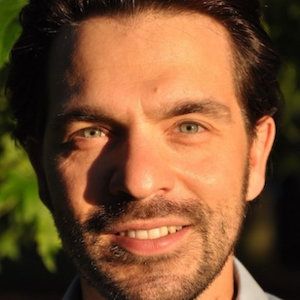App Aids in Diagnosing Pediatric Epilepsy
A prediction model helps determine the probability of childhood epilepsy in first consultation after a paroxysmal event.

Eric van Diessen, MD, PhD
The challenge of providing an early and accurate diagnosis for a child after an initial paroxysmal event with little information to differentiate epilepsy from other possibilities could become easier with a recently released web-based application.
The model predicts a percentage probability of epilepsy from clinical and electroencephalogram (EEG) data that is routinely available at first consultation, in lieu of or prior to further assessment with such measures as prolonged or sleep-deprived EEG and magnetic resonance imaging (MRI).
The model was developed by Eric van Diessen, MD, PhD, Department of Pediatric Neurology, Brain Center Rudolf Magnus, University Medical Center Utrecht, Utrecht, Netherlands, and colleagues, who point out that previous efforts to identify prognostic clinical variables for seizure recurrence have been with studies that have included only children with a definitive diagnosis of epilepsy.
"Diagnosing epilepsy, however, might be difficult considering the heterogeneity of a first paroxysmal event in children. Some of these paroxysmal events might not be epileptic in nature," van Diessen told MD Magazine®.
"To assist the clinician in the diagnostic work-up, with access to an EEG, we developed this prediction model. To improve the implementation in clinical practice, we constructed a web application that may assist clinicians to estimate the individualized probability of epilepsy in children who present after 1 or more possible seizures," van Diessen said.
van Diessen and colleagues developed the prediction model from retrospectively collected clinical data of 451 children who had been referred to an outpatient pediatric neurology clinic between 2008 and 2013 after 1 or more paroxysmal events suspected of having an epileptic origin. An additional 187 children seen in an outpatient pediatric clinic between 2013 and 2016 were identified as an external cohort to validate the model.
The outcome measure for the model was a presence or absence of epilepsy, which was defined by: at least 2 unprovoked seizures within 1 year, judged by a pediatric neurologist to be epileptic in origin; or 1 unprovoked seizure and epileptiform EEG abnormalities at first consultation or at later sleep-deprived or prolonged EEG, or by demonstration of a typical epileptogenic brain lesion on MRI.
The investigators selected potential predictor variables from what would routinely be available at the time of first consultation and corresponded to variables identified in cohort studies in children with newly diagnosed epilepsy. In addition to an EEG report, these included age at consultation, sex, age at first event, medical history, relevant family history, psychomotor development, number of events, and detailed event description.
Medical history of the child was categorized into 3 predictor variables: "neurologic history" consistent with conditions such as perinatal asphyxia or central nervous system infections; "psychiatric history" in presence of diagnoses such as autism or attention-deficit/hyperactivity disorder; and "known metabolic or genetic syndrome." Relevant family history was distinguished by such categories as presence or absence of epilepsy, febrile seizures, migraine, and seizures in first- or second-degree relatives; or with "other" categories of risk such as cerebrovascular accidents or developmental delay.
van Diessen and colleagues reported that, after at least 1 year of follow-up, the model produced excellent discrimination, as assessed with a receiver operating characteristic (ROC) curve analysis. The area under the ROC curve was .86 (95% confidence interval [CI] .80-.92), with positive predictive value of .93 (.83-.97) and negative predictive value of .76 (.70-.80).
The model was designed without a single cutoff value, as it serves as an aid to clinical decision-making rather than to stipulate a diagnosis, van Diessen and colleagues indicated. They anticipated that the use of the model will help provide needed information to parents and facilitate appropriate care and treatment, or lift the burden of unnecessary assessment procedures in children who would otherwise be wrongly diagnosed.
"We do not claim to present a diagnostic tool," van Diessen emphasized in discussion with MD Magazine®. "It is up to the clinician to finally conclude whether a child may truly have epilepsy and whether ancillary diagnostics or treatment is indicated."
In a related blog post, Lydia Furman, MD, Associate Editor of Pediatrics, wrote that, despite the tool giving a "probability of epilepsy" rather than a diagnosis, "I can easily see how this brief but carefully developed prediction tool will be very useful for all who practice clinical pediatrics."
The study, “A Prediction Model to Determine Childhood Epilepsy after 1 or More Paroxysmal Events,” was published in Pediatrics.